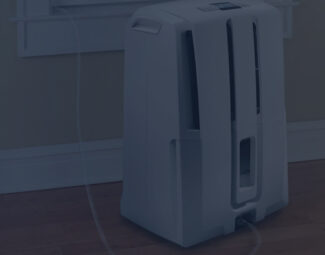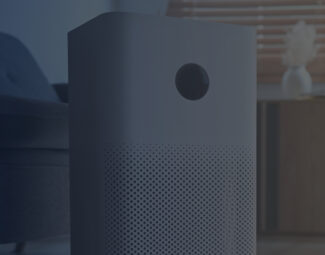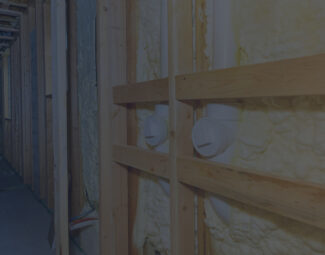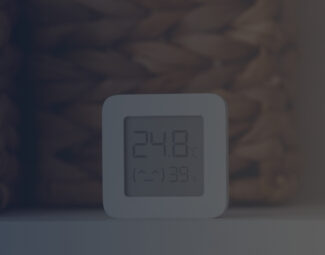A t its core, the dehumidification system serves a single purpose, and that is to remove moisture from the air and stabilize humidity. However, buying a dehumidifier is no easy business considering that aside from features and options that you must make sure it comes with to maximize its operation, you have to decide what type suits your situation best – the desiccant or the refrigerant system? We are here to help you answer this question as, in the following, we will provide you with info regarding the operating principle of both types, as well as take a detailed look at what each offers to help you get properly informed on the topic.
Make sure to check the best dehumidifiers after you decide what operating type you prefer so that you are ensured to pick a performing and lasting system.

Commercial-Grade Desiccant Dehumidifier
What You Need to Know About Desiccant Dehumidifiers
The whole premise of their operation is a reliance on moisture-absorbing materials, most systems of the sort using silica gel. Commonly, the desiccant material is set up in a rotor form, altering layers of sheets that contain the active component being used so that when the air passes through them, moisture is transferred for the air released back into the room to be dry.
These are the preferred choice when a low dew point is needed or when the action has to be carried out in an area with very low temperatures. When it comes to composition, it usually consists of the desiccant material, the fan that moves the air for dehumidifying, a heater that helps restore the absorbing material, a fan that moves the hot air, and a device that pivots the material bed.
Question: When should you use a desiccant dehumidifier?
Answer: If the application for which you intend to use it implies operating temperatures lower than 15°C or 59°F as it fairs a stable performance independent of environmental temperature conditions.
Question: How long do desiccant dehumidifiers last?
Answer: Lifespan is one of the strong points of desiccant systems as they don’t feature moving parts, which means that irreparable damage is less likely to occur. If it’s a silica gel model, you do indeed have to replace the gel as it expires, but it’s not a complicated or costly procedure. With a qualitative system, you can expect it to last well over five years, whereas lesser models provide at least one year of operation.
Question: Do desiccant dehumidifiers cause odors?
Answer: If there are odor-causing particulates in the air it pulls in and passes through the absorbing material, the system does have the potential to leave behind an unpleasant odor as the particles remain trapped within the desiccant.
Desiccant Dehumidifier Pros & Cons
The perks of owning a desiccant model:
- Work even in cold temperatures – usable regardless of the season or whether the area is heated or not.
- Lack of moving parts like a compressor pump makes them more lasting and quieter, so desiccant is the right pick to dehumidify the bedroom.
- Generally use anti-bacterial filters that relieve the air of bacteria, dust, and allergens, releasing cleaner air back into the room to help protect your health.
- Some provide continuous drainage via a hose so that you won’t have to empty the collected moisture from the container.
- Lightweight design makes it easy to relocate. You can move the unit from one room to another as you need, on your own, without much effort.
The downsides of this technology:
- Tend to be more expensive upfront;
- More expensive to run in warm temperature environments;
- Absorbing material needs regular replacement.

Woman Changing Settings on Refrigerant Dehumidifier
What You Need to Know About Refrigerant Dehumidifiers
The operating principle involves the warm air being pulled into the system, where it passes over a cooler surface. When this happens, the difference in temperature causes condensation to form. This results in the moisture dripping into the collection reservoir, and dry air being pushed out.
The components that they are comprised of include a compressor, a fan, cooling coils, and a basin where the water drops. Beware that the compressor is a moving part that can be prone to damage if you neglect dehumidifier maintenance and don’t use it as instructed. In extreme temperature conditions, ice can form on the coils, which is why it is recommended to opt for a system that features automatic defrost to prolong the system’s lifespan.
Question: What refrigerant is used in dehumidifiers?
Answer: Typically, regardless if their purpose is for residential or commercial application, dehumidifiers either use the R-22 refrigerant or the R410A refrigerant. Between the two, R410A is the most commonly used.
Question: Why are refrigerant dehumidifiers ineffective in cold environments?
Answer: As we previously explained, these systems rely on temperature difference to wick away the moisture through the production of condensing that remains trapped inside. In cold temperatures, the dew point is either harder to achieve, which causes the dehumidification capacity to drop or it becomes downright impossible to reach, the units being rendered useless in extremely low temperatures.
Question: How do you clean the coils?
Answer: Use the brush attachment of your vacuum to get in and clean the evaporator coils. Another option is to use a vinegar and water mixture and spray it on the coils, let it settle, and wash it off (do this carefully so that the water doesn’t reach the motor). You should clean the coils, as well as the entire dehumidifier, for that matter, once per week.
Desiccant Dehumidifier Pros & Cons
The perks of owning a refrigerant model:
- Ideal when operating temperatures exceed 15°C or 59°F as the dew point needed for the dehumidification process to take place is easier to achieve. This makes it the preferred choice in warm climates.
- During the operation, the compressor reheats the air to the temperature it was when it entered the system so that the air expelled doesn’t conflict with environmental conditions. Thus, it helps preserve the temperature in the room, the maximum difference being between 1°C-2°C.
- Cheap to run, a lot of products being Energy Star rated for the low power draw in their operation.
- Don’t cost much upfront as opposed to desiccant systems, being more widely available for interested customers, regardless of their allocated budgets.
- Large capacity implies that they can extract high amounts of moisture per day, which adds to their appeal in warm climates.
The downsides of this technology:
- Reliance on a temperature difference for the dew point to be achieved makes them less effective (at times even ineffective) in cold spaces.
- If temperatures drop considerably, frost could form on the coils, which poses a problem for the system’s lifespan.
- Generally flaunts a bulky design, which doesn’t make it ideal in case you want to move the dehumidifier between floors or from room to room.
- The presence of the compressor makes it a noisy system.
Which Is Better – Desiccant or Refrigerant?
Factor |
Desiccant System |
Refrigerant System |
|---|---|---|
Moisture extraction |
Good |
High (some are used for water damage restoration) |
Operating temperature |
Usable in both cold and warm environments |
Better suited for use in warm conditions |
Noise level |
Silent |
Compressor makes it loud |
Operating costs |
Moderate to high |
Low |
Portability |
Lightweight |
Heavy |
In the end, the choice between the two system types depends solely on you, on what you need, and where you intend to use it. Both have their ups and downs, but what they have in common is an equally high efficiency toward reestablishing proper humidity levels indoors, which is your main point of interest when you buy a dehumidifier anyway.
Other Aspects to Look into When Choosing a Dehumidifier
Prioritize sizing as this is the most important part of the decision-making process. If the system suits the humidity extraction demands and size of the space, you are going to achieve normal RH levels indoors regardless of the type or features it includes. After you follow through with this part and know what capacity and coverage you need from the product, you can move on to search into important features and options that make a difference in its performance, usability, and convenience in use, more precisely:
- Automatic shut-off when the tank fills to prevent overflow;
- Continuous drainage eliminates the need to empty the tank;
- Humidistat that adjusts functioning speed according to dampness conditions;
- Automatic restart with pre-selected settings after blackouts;
- Air-purifying filter that eliminates health-threatening particulates (must-have in case you suffer from allergies or asthma);
- Low operating noise if you intend to use it in the bedroom or office;
- Low power draw for cost-efficient operation;
- Automatic defrost that prevents ice buildup on the coils;
- Portable design so that you can relocate it between floors if needed.
Final Thoughts
As aforementioned, it would be wrong to say that one type is better than the other as both efficiently fulfill their purpose, wicking away excess moisture to ensure a damp- and mold-free environment. Desiccant models do better regardless of temperature conditions, whereas refrigerant systems aren’t generally dependable in cold environments, but aside from this operating differential aspect, their other traits don’t differ as prominently. It is up to you to pick which type complies with your needs better, and regardless of what you choose, one thing is for sure – you won’t have problems with high humidity in your home anymore!












